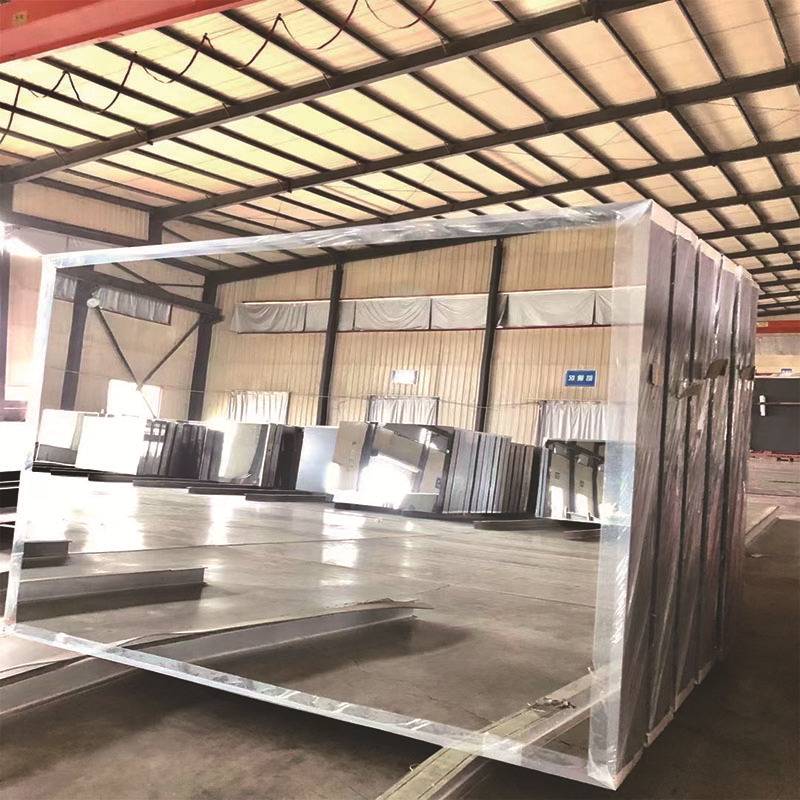The Evolution and Significance of Architectural Glass
Architectural glass has transcended its functional origins to become a critical element in modern architecture, transforming the way buildings interact with their environment. From the towering skyscrapers of major cities to the sleek, minimalist homes scattered across suburban landscapes, glass plays an integral role in shaping our perception of space and light. This article explores the evolution of architectural glass, its various applications, and the innovative technologies that are shaping its future.
Historical Context
The use of glass in architecture dates back to ancient civilizations, with the Romans being among the first to create glass windows. However, it was during the Gothic period in Europe that glass took on a more prominent role, particularly with the emergence of stained glass windows in cathedrals. These masterpieces not only served as functional windows but also told biblical stories, bringing art and light into sacred spaces.
Fast forward to the 20th century, and the invention of plate glass revolutionized the industry. Large panes could now be produced, allowing architects to design expansive windows that connected interiors with the outside world. This era saw an increase in the use of glass in commercial buildings, reflected in the sleek, modernist façades that define many urban landscapes today.
The Modern Applications of Architectural Glass
Architectural glass serves various purposes in contemporary design, contributing not only to aesthetics but also to structural integrity and energy efficiency. Glazing systems – the technical term for window and glass-facade solutions – have evolved dramatically. Low-emissivity (Low-E) glass, for example, is designed to reflect heat while allowing natural light to pass through, significantly improving the energy efficiency of buildings. This technology has become essential in the fight against climate change, helping to reduce the carbon footprint of buildings.
architectural glass
Another innovative application of architectural glass is curtain wall systems. These non-structural cladding systems allow for enormous glass surfaces to be applied to the exterior of skyscrapers without bearing any of the structural loads. This means that architects can create uninterrupted views and a seamless connection between indoor and outdoor environments, enhancing the overall experience of space.
Technological Advancements
Advancements in technology have also introduced smart glass, which can change its transparency based on external conditions. These dynamic glazing solutions can help manage solar heat gain while maintaining natural light, leading to substantial savings in heating and cooling costs. Moreover, photovoltaic glass, which can generate electricity from sunlight, represents an exciting intersection of architecture and renewable energy.
The integration of glass with smart building technologies has also enhanced security and safety. Laminated and tempered glass provides increased durability and impact resistance, essential in high-rise buildings and public spaces. As cities evolve, the need for safety and security in architecture becomes paramount, and glass technology continues to adapt to meet these needs.
The Future of Architectural Glass
As we look towards the future, the potential for glass in architecture seems limitless. With the ongoing research into even more sustainable glass production methods and design approaches, architects are tasked with creating buildings that are not only visually stunning but also environmentally responsible. The potential incorporation of biomimetic designs and creative recycling methods may lead to innovations we have yet to conceive.
In conclusion, architectural glass has come a long way from its ancient origins. It has moved from mere functional use to become a symbol of modernity and sustainability. As technology advances and our understanding of environmental impacts deepens, architectural glass will continue to play a pivotal role in shaping our built environment, reflecting the values and aspirations of contemporary society. Whether it’s through energy efficiency, aesthetic beauty, or innovative technologies, the future of architectural glass promises to be as clear and bright as the structures it adorns.
 Afrikaans
Afrikaans  Albanian
Albanian  Amharic
Amharic  Arabic
Arabic  Armenian
Armenian  Azerbaijani
Azerbaijani  Basque
Basque  Belarusian
Belarusian  Bengali
Bengali  Bosnian
Bosnian  Bulgarian
Bulgarian  Catalan
Catalan  Cebuano
Cebuano  Corsican
Corsican  Croatian
Croatian  Czech
Czech  Danish
Danish  Dutch
Dutch  English
English  Esperanto
Esperanto  Estonian
Estonian  Finnish
Finnish  French
French  Frisian
Frisian  Galician
Galician  Georgian
Georgian  German
German  Greek
Greek  Gujarati
Gujarati  Haitian Creole
Haitian Creole  hausa
hausa  hawaiian
hawaiian  Hebrew
Hebrew  Hindi
Hindi  Miao
Miao  Hungarian
Hungarian  Icelandic
Icelandic  igbo
igbo  Indonesian
Indonesian  irish
irish  Italian
Italian  Japanese
Japanese  Javanese
Javanese  Kannada
Kannada  kazakh
kazakh  Khmer
Khmer  Rwandese
Rwandese  Korean
Korean  Kurdish
Kurdish  Kyrgyz
Kyrgyz  Lao
Lao  Latin
Latin  Latvian
Latvian  Lithuanian
Lithuanian  Luxembourgish
Luxembourgish  Macedonian
Macedonian  Malgashi
Malgashi  Malay
Malay  Malayalam
Malayalam  Maltese
Maltese  Maori
Maori  Marathi
Marathi  Mongolian
Mongolian  Myanmar
Myanmar  Nepali
Nepali  Norwegian
Norwegian  Norwegian
Norwegian  Occitan
Occitan  Pashto
Pashto  Persian
Persian  Polish
Polish  Portuguese
Portuguese  Punjabi
Punjabi  Romanian
Romanian  Russian
Russian  Samoan
Samoan  Scottish Gaelic
Scottish Gaelic  Serbian
Serbian  Sesotho
Sesotho  Shona
Shona  Sindhi
Sindhi  Sinhala
Sinhala  Slovak
Slovak  Slovenian
Slovenian  Somali
Somali  Spanish
Spanish  Sundanese
Sundanese  Swahili
Swahili  Swedish
Swedish  Tagalog
Tagalog  Tajik
Tajik  Tamil
Tamil  Tatar
Tatar  Telugu
Telugu  Thai
Thai  Turkish
Turkish  Turkmen
Turkmen  Ukrainian
Ukrainian  Urdu
Urdu  Uighur
Uighur  Uzbek
Uzbek  Vietnamese
Vietnamese  Welsh
Welsh  Bantu
Bantu  Yiddish
Yiddish  Yoruba
Yoruba  Zulu
Zulu 

